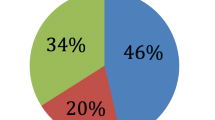Abstract
Millions of people around the world live as displaced persons, often for lengthy periods of time. Little, however, is known about the correlates of health outcomes in displaced populations. This research article used data from north-western Uganda and southern Sudan to understand if and how forced migration and resulting residential arrangements impact under-five mortality for long-term displaced and corresponding host populations. Multivariate logistic regression revealed that over the long-run forced migration and residential arrangement did not significantly impact under-five mortality.
Résumé
Dans le monde, il existe des millions de personnes déplacées, souvent pour de longues périodes de temps. On connaît peu de choses cependant sur les effets de ces mouvements sur la santé des populations concernées. Cet article s’appuie sur des données du nord-ouest de l’Ouganda et du sud du Soudan pour comprendre si la migration forcée et les conditions d’habitat qu’elle impose ont un effet sur la mortalité en-dessous de 5 ans dans les populations déplacées et dans les populations d’accueil. Grâce à une régression logistique multivariée, on constate que ces facteurs n’ont pas d’effet significatif sur la mortalité infanto-juvénile.
Similar content being viewed by others
References
O. Amaza (1998) Museveni’s Long March from Guerrilla to Statesman Fountain Publishers Kampala
R. Chambers (1986) ArticleTitle‘Hidden losers? The impact of rural refugees and refugee programs on poorer hosts’ International Migration Review 20 IssueID2 245–263 Occurrence Handle12267850
Gardner, P., Rohde, J. and Majumdar, M., 1972 ‘Health priorities among Bangladesh refugees’, Lancet834--836
B. Harrell-Bond (1986) Imposing Aid: Emergency Assistance to Refugees Oxford University Press Oxford
Harrell-Bond, B., ‘Pitch the Tents. An Alternative to Refugee Camps’, New Republic, 15--19.
Human Rights Watch, 1996. Behind the Red Line. New York
T. Kabwegyere (1995) The Politics of State Formation and Destruction in Uganda Fountain Publishers Kampala
G. Kibraeb (1991) The State of the art Review of Refugee Studies in Africa Uppsala Universitet Uppsala
G. Loescher (1993) Beyond Charity. International Cooperation and the Global Refugee Crisis Oxford University Press London
Minority Rights Group, 1984. Uganda and Sudan. London
W. H. Mosley L. Chen (1984) ArticleTitle‘An analytic framework for the study of child survival in developing countries’ Population Development Review (suppl) 1 25–45
T. Ofransky ( 2000) ‘Warfare and instability along the Sudan-Uganda border: a look at the 20th century’ J. Spaulding S. Beswick (Eds) White Nile Black Blood The Red Sea Press, Inc Lawrenceville
D. Peterson (1999) Inside Sudan Westview Press Boulder
Seaman. J., 1972. ‘Refugee work in a refugee camp for Bangladesh refugees in India’, The Lancet:866--870.
A. Simmance (1987) ‘The impact of large-scale refugee movements and the role of UNHCR’ J. Rogge (Eds) Refugees: a Third World Dilemma Rowman & Littlefield Totowa, NJ
InstitutionalAuthorNameStata Corporation (1999) Stata Reference Manual Release 6 Stata Corporation, College Station Texas
F. Taha (1978) ArticleTitle‘The Sudan-Ugandan boundary’ Sudan Notes and Records 59 1–23
The Economist Intelligence Unit, 1995. Sudan: Country Profile, 1994–1995. London
M. Toole (1993) ‘The public health consequences of inaction: lessons learned in responding to sudden population displacements’ K. Cahill (Eds) A Framework for Survival: Health, Human Rights and Humanitarian Assistance in Conflicts and Disasters Harper Collins New York 144–158
InstitutionalAuthorNameUNHCR (1993) The State of the World’s Refugees. The Challenge of Protection Penguin Books Geneva
InstitutionalAuthorNameUNHCR (2003) Refugees and others of concern to UNHCR: 1999 statistical overview. Registration and Statistical Unit, Programme Coordinational Section United Nations High Commissioner for Refugees Geneva
InstitutionalAuthorNameUSCR (2000) World Refugee Survey D.C.: Immigrant and Refugee Services of America Washington
InstitutionalAuthorNameUSCR (2003) World Refugee Survey D.C.: Immigrant and Refugee Services of America Washington
W. Damme ParticleVan (1995) ArticleTitle‘Do refugees belong in camp? Experiences from Goma and Guinea’ The Lancet 346 360–362 Occurrence Handle10.1016/S0140-6736(95)92231-8
A. Virmani (1996) The resettlement of Ugandan Refugees in Southern Sudan, 1979–86 Department of Political Science, Northwestern University Evanston
P. Woodward (1991) ‘Uganda and southern Sudan 1986–9: new regimes and peripheral politics’ H. Hansen M. Twaddle (Eds) Changing Uganda Fountain Publishers Kampala
A. Zolberg A. Suhkre S. Aguayo (1989) Escape from Violence: Conflict and Refugee Crisis in the Developing World Oxford University Press New York
Author information
Authors and Affiliations
Corresponding author
Additional information
The authors wish to thank the United States Agency for International Development (USAID), The Hewlett and Andrew Mellon Foundations and The National Institute of Child Health and Human Development (NICHD). The research for this article was carried out while the primary and secondary authors were students at The Johns Hopkins University School of Public Health.
Singh, K., Karunakara, U., Burnham, G. and Hill, K., 2005, Forced Migration and Under-five Mortality: A Comparison of Refugees and Hosts in North-western Uganda and Southern Sudan, European Journal of Population.
Singh, K., Karunakara, U., Burnham, G. et Hill, K., 2005, Migrations forcées et mortalité infanto-juvénile : comparaison des réfugiés et des populations d’accueil dans le nord-ouest de l’Ouganda et le sud du Soudan, Revue Européenne de Démographie
Rights and permissions
About this article
Cite this article
Singh, K., Karunakara, U., Burnham, G. et al. Forced Migration and Under-five Mortality: A Comparison of Refugees and Hosts in North-western Uganda and Southern Sudan. Eur J Population 21, 247–270 (2005). https://doi.org/10.1007/s10680-005-6855-2
Received:
Accepted:
Issue Date:
DOI: https://doi.org/10.1007/s10680-005-6855-2




